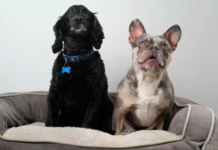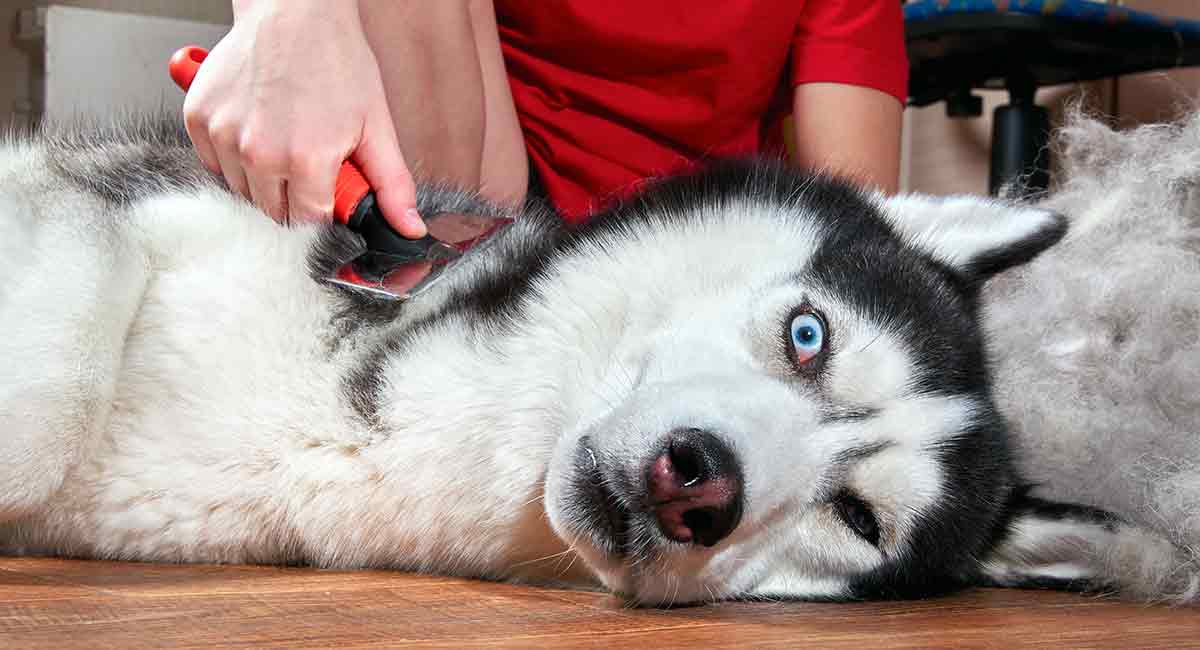Last Updated on October 1, 2023 by Fumipets
12 Shaggy Dog Breeds That Have Some Big Hair
Shaggy dog breeds are known for their impressive coats that exude charm and charisma. These dogs are not only wonderfully fluffy but also incredibly endearing. Let’s take a closer look at these shaggy wonders, followed by some common questions about these breeds.
Shaggy Dog Breeds: A Glimpse
Snuggle partners are shaggy dogs. Their lengthy fur often needs a little more attention. But if you’re prepared to invest the additional time these puppies need, you’ll be rewarded with a lovely friend.
While many shaggy dogs were developed as lapdogs, they may be found in a variety of sizes and forms. Almost everyone may own a shaggy dog, from the Yorkshire Terrier to the Giant Schnauzer.
In this post, we’ll look at some of the most well-known and shaggiest dogs. What qualifies as shaggy may sometimes be a little tricky. Maybe the shaggiest dog is the Komondor. Although its hair isn’t nearly as long, the Spinone may also be rather shaggy.
The Top 12 Shaggy Dog Breeds
1. Yorkshire Terrier

One of the smallest terrier breeds is the Yorkshire terrier. Despite the fact that they seem to be lap dogs, it’s vital to note that they are really terriers. They behave like terriers and are often highly active, thus they seldom spend much time on anyone’s lap. If you’re searching for a more active dog that will keep you engaged, they are great for city life.
They do not shed at all, and their coat resembles human hair. That might get quite lengthy. Puppies often seem darker than they will when they are older since it normally takes their coat a few years to attain its ultimate color.
2. Affenpinscher

Due to the Affenpinscher’s facial resemblance to a monkey, they are frequently referred to as “monkey terriers.” They are within the terrier category and are a toy breed. They don’t behave at all like the terriers you’re presumably picturing, however.
While they are renowned for being cuddly, they are also rather busy. They require early socialization to ensure that they are welcoming of strangers since they might be a bit defensive. They are calm canines that prefer adult-only households since young children may hurt them easily.
3. Havanese

This dog was created in Havana and is a native of Cuba, thus its name. Its hair may be fairly scruffy and does get pretty long. They are available in a plethora of hues. Its coat is renowned for being as soft as silk and exceedingly plush. Many claims that the touch of their jackets is chilly. While some owners choose to cord it, their coat does need to be brushed out. But, adding cording doesn’t make the coat easier to make.
4. Brussels Griffon

Another dog breed that may or may not be hairy is the Brussels Griffon. But, just having a moustache got them on this list.
They are a strong little toy dog. In contrast to some other little dogs, they are robust and resilient. They have two different coat types, the rough coat being the shaggiest. These dogs have a reputation for being cuddly and loving. While having less hair than other lapdogs, they are nonetheless a lapdog. Kids need early socialization since they might be a little sensitive.
They may form a close attachment with only one owner and be “one-person dogs.” They thrive in smaller families as a result.
5. Black Russian Terrier

The bigger Black Russian Terrier was developed in the USSR as a working breed. Compared to many other breeds on this list, they are more uncommon. However, since they are not actual terriers, they lack the distinctive terrier personality.
They have a thick, layered coat that is rather shaggy. Although it doesn’t shed much, it needs to be frequently trimmed. These dogs often exude calm and confidence. They are unhurried. They are simple to teach and do need constant mental stimulation since they are an intelligent breed. They are renowned for their hard ethic and do well in their jobs.
6. Giant Schnauzer

The Giant Schnauzer is unquestionably larger than other Schnauzer breeds, but it isn’t anywhere close to the size of certain other “giant” dogs, such as the Great Dane. These dogs’ coats may not be as shaggy as some others, but they still have hair that is medium long and rather rough.
They might be a little bit too possessive of their family and are not especially nice to outsiders. They are reserved and want to stay away from strangers. To stop hostility, they should be socialized early. They have a high level of intelligence and are quickly bored. They thus need regular mental stimulation.
7. Komondor

The shaggy dog is called a Komondor. As they resemble mops, they are often referred to as “mop dogs.” While they were sometimes used to protect property, they were raised to be livestock guardian dogs. Usually, their coat is thick and matted.
They are excellent companions since they are stable, quiet dogs. They do need some socialization to develop an openness to outsiders. They are very tolerant of kids and fiercely devoted to their family. Yet, owing to their territorial nature, they are not suitable for flats.
8. Bergamasco
Also, this unusual dog has a corded coat. They are one of the shaggiest dogs, albeit they are less common than the other dogs on this list. This strong dog is substantial and durable. They have the same calm and collected nature as other guarding dogs since they were developed to protect cattle.
9. Briard Dog

This dog is a native of France. They don’t have a corded coat, but they do have a very long coat that often covers their eyes. While they are big, tough dogs, they are possibly more agile than you may think.
They share characteristics with other herding dog breeds as a herding dog. They need some socializing and are protective of their family. They are normally not hostile, however. They tend to be highly vigilant and will labor endlessly if required since they are giant canines that can manage enormous flocks of sheep.
10. Old English Sheepdog

The model dog for a shaggy dog is the Old English Sheepdog. The face and eyes are hidden by their very long coats. They don’t shed much, but they do need to be regularly brushed to get rid of extra hair.
These dogs are seldom violent and are quite peaceful. They are couch potatoes that get along well with kids. Like other herding breeds, they will herd youngsters, but they do it gently rather than with the snapping that is typical of dogs like the Border Collie. Unlike the majority of other herding breeds, they are sociable. As long as they get the right exercise, this dog is completely at home in almost anyplace.
11. Spinone Italiano

Unexpectedly shaggy is this Italian hunting dog. They don’t always have as scruffy of hair as a sheepdog, but it is pretty long and sometimes known to be curly. They have a very scruffy look since their hair likes to feather. They are available in a variety of hues, including white and roan.
12. Terriers

Almost every terrier in existence might be classified as “shaggy.” If you choose a terrier at random from a list, its hair would presumably be messy. There are hardly many terrier breeds that have shaggy coats.
We made the decision to include the whole group on our list because of this. There are 30 different terrier breeds listed by the AKC, which is much too numerous to go through individually. A terrier could be the ideal tiny, scruffy dog for you.
5 Common Questions About Shaggy Dog Breeds
1. Do shaggy dog breeds require a lot of grooming?
Yes, many shaggy dog breeds require regular grooming to prevent matting and maintain the health of their coats. This often involves brushing, detangling, and sometimes professional grooming.
2. Are shaggy dogs hypoallergenic?
While no dog breed is entirely hypoallergenic, some shaggy breeds, like the Puli, may produce fewer allergenic proteins due to their corded coats. However, individual allergies can vary.
3. Do shaggy dogs shed a lot?
Shaggy dog breeds can shed, but the extent varies. Breeds like the Shih Tzu tend to shed less, while those with corded coats, like the Puli, typically shed minimally.
4. Are shaggy dogs good family pets?
Many shaggy breeds, such as the Old English Sheepdog and Briard, are known for their gentle and loving nature, making them excellent family pets. However, early socialization and training are essential.
5. What’s the history behind corded coats in some shaggy breeds?
Corded coats in breeds like the Puli and Komondor served practical purposes. The cords protected them from harsh weather and predators while herding livestock. Today, they’re cherished for their unique appearance.


















